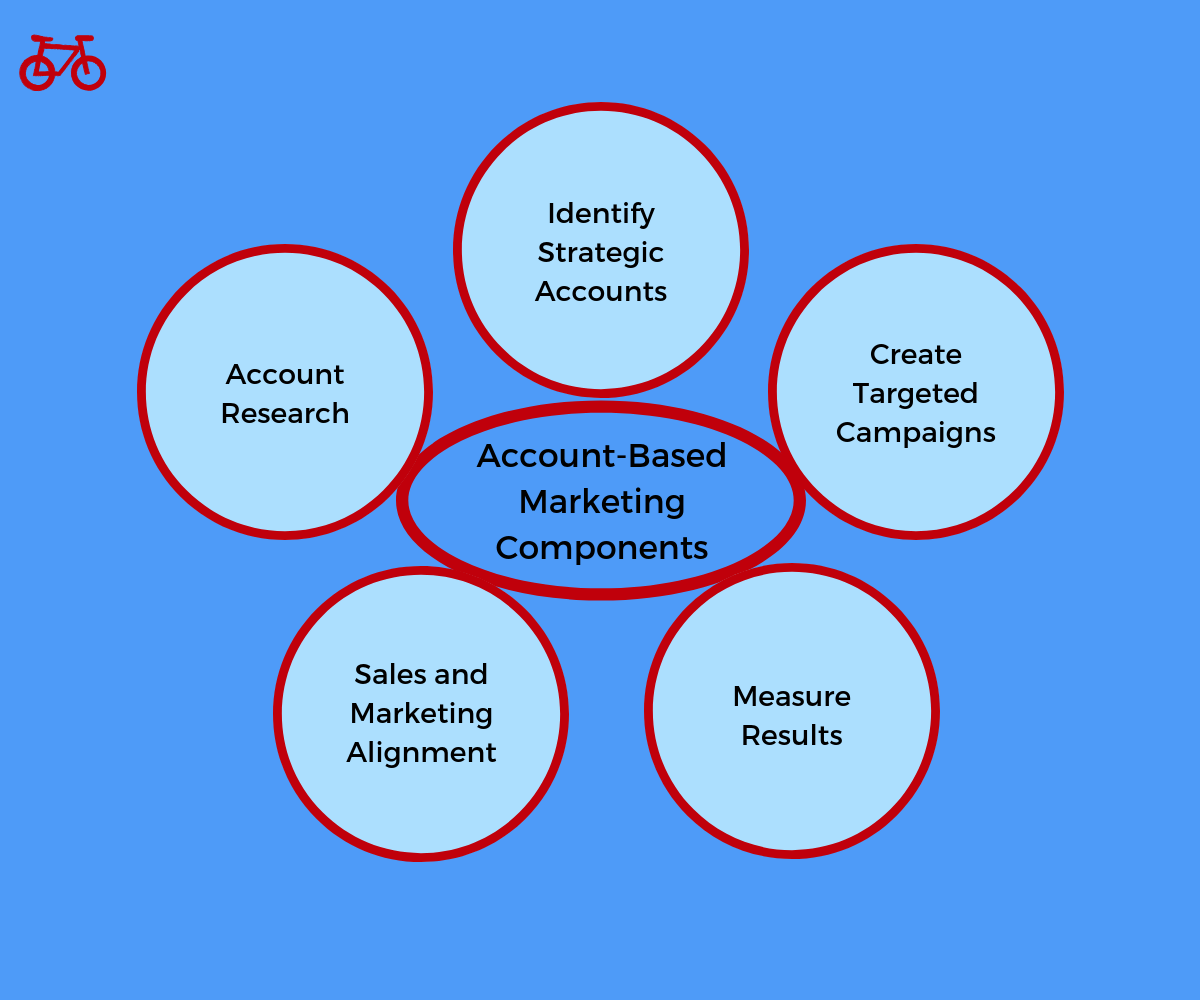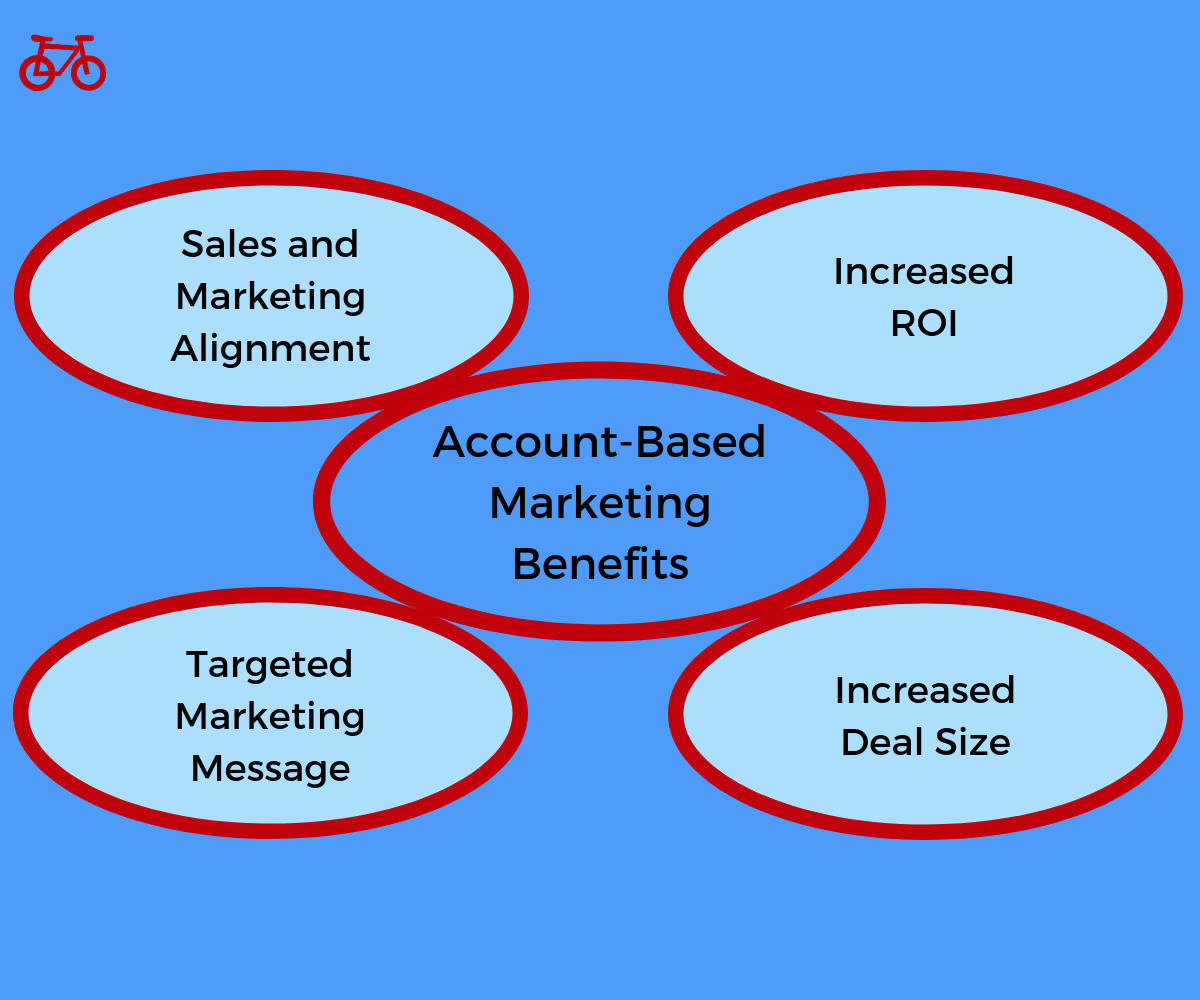Focus in our marketing can help drive more targeted campaigns with more relevant messages to our targets. This can be segmenting our database, targeting prospects better, or focusing on strategic accounts.
Better targeting means more relevant marketing. More relevant marketing increases our conversions and ROI.
That is the concept behind account based marketing. To increase the focus of our marketing. The focus being on strategic accounts.
Here, we will take a look at an overview of account based marketing.
What is Account Based Marketing?
Account based marketing (ABM) is a marketing strategy that targets specific companies to market to. It is a strategic approach to marketing that identifies key accounts and markets directly to the account as a whole. This is done rather than marketing to all potential prospects in a given market on an individual basis.
Essentially, account based marketing is treating each account individually and creating marketing campaigns on an account level.
Who Should Use Account Based Marketing?
Account based marketing tends to be a business to business (B2B) marketing strategy. Reason being that enterprise level business to business companies require a marketing strategy that focuses on the large enterprise customers that are required.
Also, enterprise prospects require a different approach to be marketed to. The buying process tends to be long. There are almost always many stakeholders within a company. Thus, account based marketing is a strategy that aligns with enterprise B2B companies.
Account based marketing is primarily used by enterprise B2B companies to market to enterprise B2B customers.
Components of Account Based Marketing
When looking at account based marketing, there are a number of areas of focus. These are the fundamental components of the strategy. These fundamentals are the foundation to build and execute an account based marketing strategy.
The following are components of account based marketing.

Identify Strategic Accounts
The first component of account based marketing is to identify strategic accounts. As this marketing strategy focuses on targeting an entire account, we need to identify the accounts that should be targeted.
Thus, looking at the market and identifying the accounts to target is the first step in rolling out an account based marketing strategy.
Account Research
The next stage, after the target accounts have been identified, is to research the accounts. A determination needs to be made about how best to target the accounts.
The account research phase includes determining the best channels to communicate with the account. If a content strategy is effective, then what is the content that should be created. Also, what contacts at the company should be targeted. Assuming you do not need to focus on the entire company.
This component will set the stage for the specific marketing campaigns that will be launched.
Create Targeted Campaigns
Once the accounts are identified and researched, the next phase of our strategy is to actually create our account based campaigns.
The account based marketing campaigns we create will include advertising to targeted accounts. There might be content that is created and targeted to specific accounts. Also, events, groups, and community engagement targeted at specific accounts can be utilized as well. Lastly, sales will work in conjunction with marketing to effectively execute the marketing campaigns.
Campaign creation is the meat of the account based marketing components.
Sales and Marketing Alignment
The next component to look at is aligning the sales and marketing teams. One reason that account based marketing requires sales and marketing alignment is that large deals and strategic accounts have a buying process that requires sales involvement.
Then, sales and marketing alignment becomes critical, as sales traditionally thinks in terms of an account based approach. Focusing on alignment is a critical step in an account based marketing strategy.
Measure Results
The last component, which is a theme across all our marketing, is to measure our results. Generating a positive ROI is critical for any marketing campaign. Thus, employing tools and processing to track and measure campaign and strategy effectiveness is critical.
Account based marketing has several stages and components. Working through each stage and component is the foundation for our strategy. The above components are a general overview that provides the first steps in creating an effective account based strategy.
Sales and Marketing Alignment
A key component of account based marketing is aligning the sales and marketing teams. Which, is a never-ending struggle.
Traditionally, marketing has focused on creating market awareness, which then generates leads. These leads focused on individuals rather than accounts. Generally speaking.
Sales on the other hand, focused on individuals, but more often, it was more account based. B2B sales professionals have long since been focused on strategic accounts.
Thus, there may have been an alignment issue in the organization. Account based marketing puts the marketing organization and the sales organization in the same focus. To do that, each team has specific roles. The role of marketing and the role of sales in an account based strategy are the following.

The Marketing Team Role
The role of the marketing team is focusing on the initial stages of the ABM strategy, the content, and the advertising directed at our targeted accounts.
Marketing should be identifying the strategic accounts and helping conduct research within the accounts themselves. Then, marketing is responsible for creating content that is targeted at specific accounts.
Marketing is responsible for typical top-of-the-funnel activities. Then, adding an ABM focus to those activities.
The Sales Team Role
The role of sales within ABM is to understand the marketing team’s ABM strategy, then working to close deals in the strategic accounts. This tends the be the back half of the sales funnel.
Also, sales should work to identify strategic accounts and who the best people to work with in an account would be. Sales can tend to have more insight within an account, as they will be directly working in the account and calling on the account.
Ultimately, the sales team and the marketing team will work together. Both researching potential strategic accounts and conducting research within the accounts. ABM helps facilitate this alignment. An effective ABM strategy requires this alignment.
Benefits of Account Based Marketing
ABM is not the only marketing strategy a company has to employ. Nor is it necessarily the best. It can be used in conjunction with other tactics and strategies, such as inbound marketing.
But, ABM does have clear benefits. These benefits can be key for specific companies. They are often critical benefits for enterprise B2B companies targeting enterprise B2B customers.
The following are some of the benefits of account based marketing.

Sales and Marketing Alignment
As we spent an entire section detailing sales and marketing alignment, this is a major benefit of the ABM strategy. In a B2B company, sales and marketing can often be at odds with each other. Thus, if there is a strategy that helps to align the two teams, this is a clear benefit.
This is the case with ABM. ABM helps drive both teams to focus on strategic accounts and closing those strategic accounts.
Increased ROI
The ABM strategy focuses on strategic accounts, which tend to be larger accounts with larger deal sizes. Thus, if we have larger deal sizes, the ROI can be significantly higher when those deals close.
Many organizations report a higher return when using an ABM approach. A lot of that can be attributed to the alignment of sales and marketing and both teams focusing on larger deals.
Targeted Marketing Message
Another benefit to ABM is the use of strategic and targeted messages. By having a more targeted message to our audience, we can drive up engagement rates. The increased relevance helps our message stand out to the prospects at our strategic accounts.
Better message targeting is a clear benefit to the ABM approach.
Increased Deal Size
As we mentioned in increasing the ROI, ABM facilitates larger deal sizes. This is a benefit to using ABM, as companies will focus on less deals that are higher in value. Thus, each deal has a greater impact on revenue.
The increased deal size also provides more opportunities to invest in the acquisition of higher profile and higher revenue customers. Ultimately, having a greater impact on the overall business and marketing ROI.
Account based marketing is not a new concept in marketing or in sales. It has just gained new traction as tools are providing increased insights and execution of the strategy. For B2B companies, particularly those focused on large, enterprise level customers, it can be an effective strategy.
Using the overview above, you can get an idea whether ABM is a concept worth further research and a possible strategy for your business.
